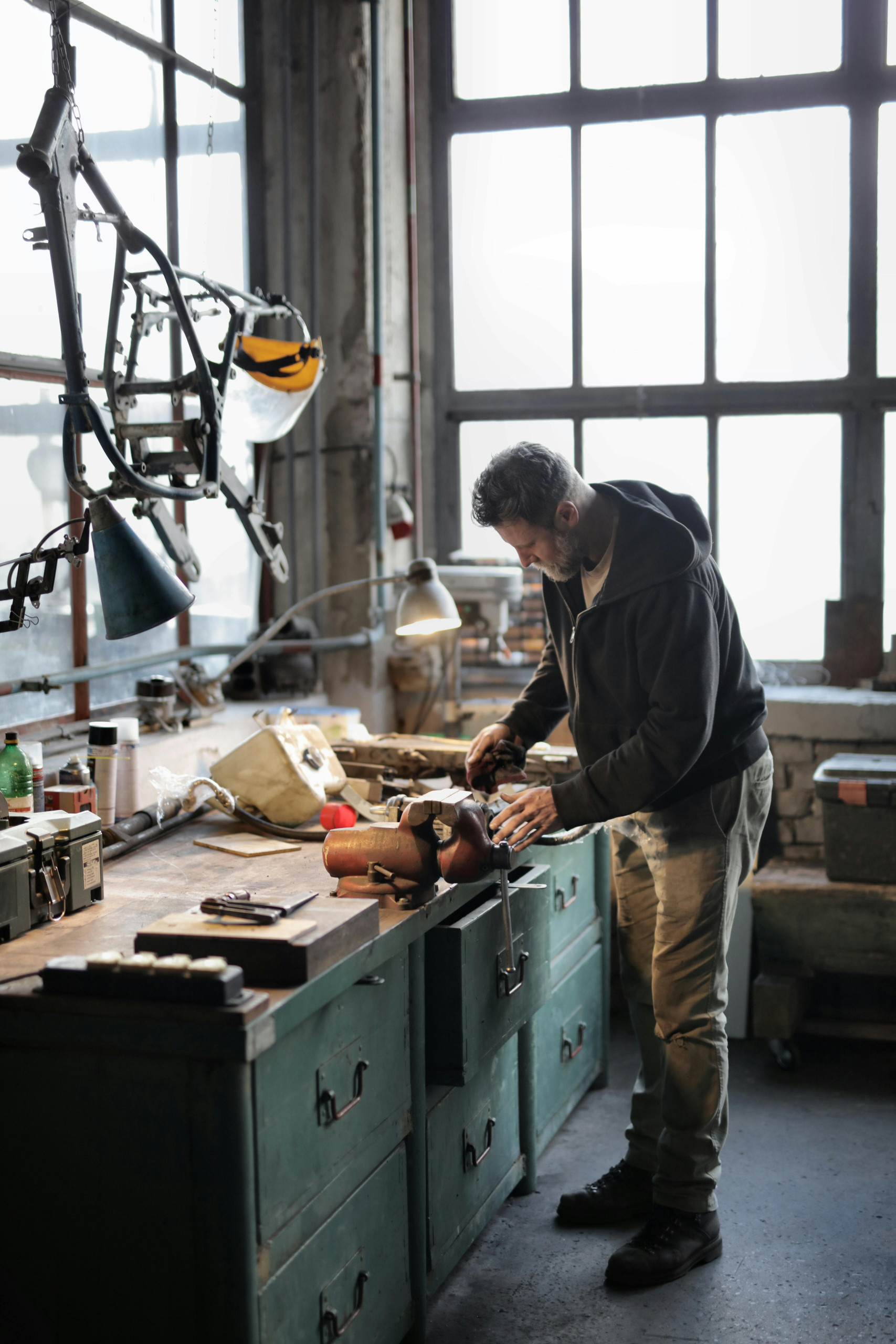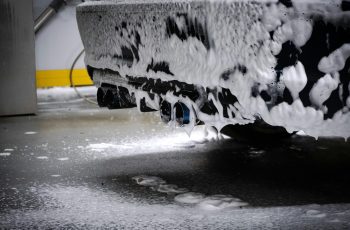In the world of industrial applications, the ability to customize and tailor heavy-duty die grinder setups is essential for maximizing efficiency and productivity. Whether it’s in manufacturing, construction, or any other industry that requires precision grinding, having a setup that is specifically designed for your unique needs can make all the difference. In this article, we will explore the importance of customization in heavy-duty die grinder setups and how it can lead to improved performance and cost savings. From choosing the right attachments to optimizing speed and power, we will guide you through the process of creating a setup that is perfectly suited to your specific industrial application.

Understanding Heavy-duty Die Grinder Setups
What is a die grinder?
A die grinder is a power tool that is used for grinding, sanding, honing, and polishing applications. It is an essential tool in many industries due to its versatility and ability to perform precision work. Die grinders are typically handheld and feature a rotating spindle that holds various types of abrasive attachments.
Types of die grinders
There are two main types of die grinders – electric and pneumatic. Electric die grinders are powered by electricity and are ideal for applications that require continuous and consistent power. On the other hand, pneumatic die grinders are powered by compressed air, making them suitable for environments where electricity is not readily available or poses a safety risk.
Importance of heavy-duty die grinders in industrial applications
Heavy-duty die grinders are specifically designed to tackle demanding tasks in industrial settings. These applications often require high power, extended operation times, and the ability to withstand harsh environments. Heavy-duty die grinders excel in industries such as metal fabrication, automotive manufacturing, aerospace, construction, and more. Their durability, reliability, and precision enable operators to achieve high-quality results efficiently.
Identifying Industrial Applications
Various industries that utilize heavy-duty die grinders
Heavy-duty die grinders find applications across a wide range of industries. In the metal fabrication industry, die grinders are used for deburring, weld seam preparation, grinding, and polishing. Automotive manufacturers rely on die grinders for rust removal, surface cleaning, and engine porting. Aerospace industries use die grinders for precision machining of components, while construction companies utilize them for concrete surface preparation and cutting.
Common tasks performed in these industries
In the metal fabrication industry, common tasks performed with heavy-duty die grinders include removing sharp edges, cleaning welds, blending surfaces, and polishing metal projects. Automotive manufacturers often use die grinders to remove paint, grind down welds, and shape various parts. Aerospace industries utilize die grinders to create precise contours and shapes on aircraft components. Construction companies rely on die grinders for concrete grinding, surface leveling, and tile cutting tasks.
Analyzing Specific Requirements
Evaluation of application-specific needs
Each industry and application has unique requirements that need to be taken into consideration when customizing heavy-duty die grinder setups. Factors such as the type of material being worked on, the desired finish, the required power and speed, and the expected workload play a crucial role in determining the appropriate customization options.
Factors influencing customization
Several factors influence the customization of heavy-duty die grinder setups. These include the size and shape of the workpiece, the level of precision required, the available power sources, and the availability of suitable attachments and accessories. Environmental factors such as temperature, humidity, and the presence of dust or contaminants also need to be considered to ensure optimal performance and longevity of the customized setup.
Identifying limitations
While customization options for heavy-duty die grinder setups are extensive, there are certain limitations that need to be acknowledged. These limitations can include restrictions on the available power supply, space constraints, compatibility issues with existing machinery, budgetary constraints, and the availability of specialized attachments and accessories. It is important to assess these limitations and find suitable solutions to ensure the success of the customization project.
Selecting the Right Heavy-duty Die Grinder
Reviewing specifications and features
When selecting a heavy-duty die grinder, it is crucial to review various specifications and features. These include the power rating, speed range, torque, spindle size, and the availability of variable speed control. Additionally, factors such as the durability of the tool, the ease of maintenance, and the reputation of the manufacturer should also be considered.
Matching grinder capabilities with application requirements
To ensure optimal performance, it is important to choose a heavy-duty die grinder that matches the application requirements. For example, if the task at hand involves heavy material removal or grinding, a high-powered die grinder with a larger spindle size may be required. However, for precision tasks such as polishing or honing, a die grinder with variable speed control and a smaller spindle size may be more appropriate.
Considering ergonomics and safety features
In addition to performance specifications, it is essential to consider the ergonomics and safety features of a heavy-duty die grinder. Features such as a comfortable grip, vibration reduction technology, and a reliable safety switch can greatly enhance operator comfort and reduce the risk of injuries. When customizing die grinder setups, it is vital to prioritize the well-being and safety of the operators.

Customization Options
Modifying grinder attachments and accessories
One of the key aspects of customizing heavy-duty die grinder setups is modifying the attachments and accessories. Depending on the specific application requirements, attachments such as grinding wheels, sanding discs, polishing pads, and cutting blades can be tailored to achieve the desired outcome. Additionally, custom-made attachments can be designed to meet unique needs that are not readily available in the market.
Adapting power source and speed settings
Customization also involves adapting the power source and speed settings of the die grinder to suit the application needs. This may involve modifications to the electrical wiring, adjusting the air pressure for pneumatic die grinders, or integrating the die grinder with other power tools or machinery. Proper customization ensures that the die grinder setup operates smoothly and efficiently within the given industrial environment.
Integration with existing machinery
To streamline workflow and maximize productivity, heavy-duty die grinder setups can be customized to seamlessly integrate with existing machinery. This may involve designing mounting brackets, incorporating dust extraction systems, or adapting the die grinder setup to work in tandem with other tools and equipment. Integration eliminates the need for manual handling and reduces setup time, allowing for a more efficient and ergonomic process.
Working with Manufacturers and Suppliers
Consulting with experts in heavy-duty die grinder customization
When undertaking a customization project for heavy-duty die grinder setups, it is advisable to consult with experts in the field. Manufacturers and suppliers who specialize in industrial power tools can provide valuable guidance and recommendations based on their experience and expertise. Their insights can help identify the most suitable customization options and ensure the successful implementation of the customized setups.
Finding reputable manufacturers and suppliers
To guarantee the quality and reliability of the customized die grinder setups, it is important to work with reputable manufacturers and suppliers. Conducting thorough research, reading customer reviews, and seeking recommendations from industry peers can help identify trusted companies that offer high-quality products and excellent customer service. Working with reputable manufacturers and suppliers minimizes the risk of equipment failure and ensures ongoing support.
Requesting quotes and lead times
Before finalizing a customization project, it is essential to request quotes from manufacturers and suppliers. This enables a detailed evaluation of the costs associated with the customization, including any additional charges for custom-made attachments or integration with existing machinery. Additionally, obtaining information on lead times allows for proper planning and scheduling of the implementation process.

Implementing Customized Setups
Installation and setup process
Implementing customized setups for heavy-duty die grinders involves a careful installation and setup process. This may include mounting the die grinder securely, connecting power sources or air hoses, and configuring the speed and torque settings. It is crucial to follow the manufacturer’s instructions and safety guidelines to ensure the proper functioning of the customized die grinder setup.
Testing and calibrating the customized die grinder
After the installation process, it is vital to thoroughly test and calibrate the customized die grinder setup. This includes running the die grinder at various speeds, evaluating its performance, and ensuring that all modifications and adjustments are functioning as intended. Calibrating the die grinder setup ensures optimal performance and minimizes the risk of errors or malfunctions during operation.
Training operators on safe and efficient usage
Once the customized die grinder setup is fully functional, it is important to provide comprehensive training to operators on its safe and efficient usage. This includes educating operators on proper tool handling, the correct selection of attachments, safety precautions, and maintenance procedures. Training programs should be tailored to the specific customization features of the die grinder setup to maximize its potential and ensure operator competency.
Best Practices and Tips
Regular maintenance and inspection
To prolong the lifespan and ensure the reliability of customized die grinder setups, regular maintenance and inspection are essential. This includes cleaning the die grinder, lubricating moving parts, checking for wear and tear, and replacing worn-out attachments or components. Adhering to a routine maintenance schedule prevents unexpected breakdowns, maximizes performance, and reduces the need for costly repairs.
Documentation of customization details
Maintaining detailed documentation of the customization details is crucial for effective long-term management of die grinder setups. This documentation should include information such as the specific modifications made, the rationale behind those modifications, any technical specifications, and the contact information of the manufacturers or suppliers involved. Documentation provides valuable reference material for future maintenance, troubleshooting, or replication of the customized setups.
Continuous improvement and feedback
To continuously optimize the performance of customized die grinder setups, it is important to gather feedback from operators and regularly review the setup’s effectiveness. This feedback can highlight areas for improvement, identify any unforeseen challenges, and lead to further customization or fine-tuning of the die grinder setup. An ongoing feedback loop ensures that the setup remains aligned with the evolving needs and requirements of the industrial applications.
Budgeting and Cost Considerations
Determining the budget for customization
When customizing heavy-duty die grinder setups, it is crucial to determine a budget that takes into account the costs associated with modifications, attachments, accessories, and any additional equipment required. A realistic and comprehensive budget allows for effective planning and ensures that customization projects are financially feasible.
Evaluating return on investment
To justify the investment in customization, it is important to evaluate the return on investment (ROI). This involves assessing the potential benefits of customizing die grinder setups, such as increased productivity, improved quality, reduced downtime, and enhanced operator safety. By comparing the expected benefits with the costs of customization, businesses can make informed decisions and determine the feasibility of the project.
Exploring financing options
Financing options such as leasing, equipment financing programs, or capital expenditure budgets can help businesses manage the costs associated with customizing heavy-duty die grinder setups. Exploring these options and working closely with financial institutions can provide businesses with flexible solutions that align with their budgetary constraints. Proper financial planning ensures that the customization project moves forward smoothly without compromising other aspects of the business.
Case Studies and Success Stories
Real-world examples of customized heavy-duty die grinder setups
Several real-world examples demonstrate the successful customization of heavy-duty die grinder setups. For instance, a metal fabrication company customized their die grinder setup with a dust collection system to meet environmental regulations and enhance operator safety. Another example is an automotive manufacturer that designed custom attachments for their die grinders to improve paint removal efficiency.
Benefits and outcomes achieved
Customizing heavy-duty die grinder setups has brought numerous benefits and outcomes to various industries. These include increased productivity, reduced labor costs, improved product quality, enhanced operator ergonomics and safety, and minimized equipment downtime. Additionally, customized setups have allowed businesses to tackle challenging applications and achieve results that were previously unattainable.
Lessons learned from implementation
Customization projects for heavy-duty die grinder setups have provided valuable lessons for businesses. It is crucial to thoroughly analyze the application requirements, consult with experts, and carefully plan the customization process to avoid costly mistakes or ineffective solutions. Additionally, maintaining open communication channels between operators, maintenance teams, and suppliers is key to addressing challenges and ensuring continuous improvement.
In conclusion, customizing heavy-duty die grinder setups for specific industrial applications is a crucial process that enables businesses to optimize productivity, improve quality, and enhance operator safety. By understanding the various customization options, working with reputable manufacturers and suppliers, and implementing best practices, businesses can achieve successful outcomes and maximize their return on investment. The customization of die grinder setups is an ongoing journey of continuous improvement, ensuring that industries stay at the forefront of efficiency and innovation.



